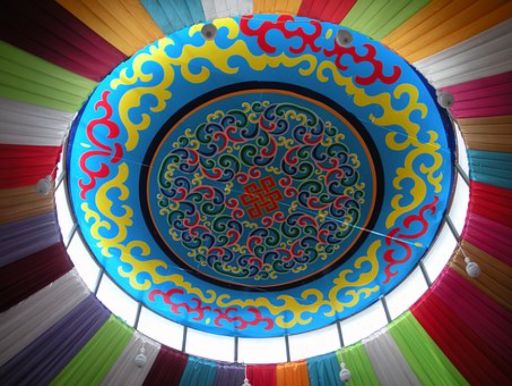A yurt is a semi-permanent structure, which implies it has its own set of construction expenses. Yurts have grown in popularity as a method to provide a living area in an alternative location, such as one without basic utilities.
Your overall cost will be influenced by various factors: sizes, designs, and materials used among others.
Total Estimated Cost of Building a Yurt:-
Yurt on the ground with no utilities: $4000-$12,000 (building materials alone)
Yurt on existing structure/foundation with utilities: $5,000 -$40,000+ depending on size, location, and a number of features installed.
If you are considering building your own yurt, be sure to do your research and draw up a detailed plan before starting. A poorly planned yurt may not withstand the elements for very long, costing you more in repairs than you originally spent on materials.
How to come up with the cost of building a yurt
Land Size/Location size
The cost of land is usually dependent on its size, location, and any restrictions placed by the local government. Land may be leased or purchased with the costs varying depending on where you purchase it. A basic example of not using public utilities would include purchasing a plot of land in an area that requires little to no development.
The specific codes for your location. For example, an individual who lives in a rural area with little to no development may be able to build a yurt on their own without government interference.
The complexity of the Design/Plan
The more complicated your yurt is the more expensive it will be to build. A simple, traditional design with few embellishments may start at around $4000-$5000, while an elaborate design with multiple doorways and windows can cost $7000 or more.
The design or plans for your yurt can have a significant impact on the final cost. Plans purchased online are usually much cheaper than those purchased from professionals, but it will be more difficult to modify them if issues arise during construction.
Hiring a structural engineer to design the plans, will make sure it is safe and has no issues such as load-bearing walls or ceiling beams.
Building site preparation
Preparing a land site for building a yurt varies depending on whether or not you will be required to clear vegetation or prepare an area for the foundation.
If a land site does not have to be cleared of vegetation, a person can build a yurt on top of gravel or another type of flat surface. Clearing an area for a foundation involves removing trees and vegetation from the building site, digging holes for concrete piers, and then clearing away excess material once the concrete has been poured. If the building site is an area that requires a foundation, you might need to pay someone to remove large rocks or tree stumps if they are present before pouring concrete.
Type and Quality of Materials used

Materials: plywood, shingles, ropes, dowel rods and fittings, galvanized nails/screws, canvas or sheeting material.
The materials used to build a yurt are dependent on the location, size, and local building codes. The roof structure includes rafters, poles, beams, plywood, or sheeting material. Some buildings sites may also need an eavestrough system if their walls are raised off the ground. If the walls are not raised off the ground, the building site may need fencing or some other form of enclosure to prevent animals from entering.
A yurt that is built in an area with no electricity, plumbing, or gas available will have different requirements than one built in a location with public utilities. A yurt in an area without electricity would require alternative forms of power such as solar panels and wind turbines. A yurt in an area without plumping would need to have alternative water sources.
The tradeoff for using less expensive building materials can be a shorter life span for the structure or having to replace them sooner than expected due to wear and tear.
It’s easier to estimate the total cost of materials required to build a yurt by estimating the surface area. You can always upgrade or downgrade your materials based on your budget.
Transport of the materials
The cost of transporting materials can vary depending on the location and distance from suppliers. Transportation costs also increase when including specialty items, such as a heavy beam for a roof structure.
Building permits
Many areas require receiving proper permissions for building structures, especially those involving permanent structures such as yurts. Permits often need to be submitted before construction begins.
A building permit is a document filed with the local government that is legally required before beginning the construction of a yurt. In most areas, a building permit must be obtained before erecting buildings for purposes of selling or receiving compensation. A person may also need building permits if they are going to fence in an area or construct concrete slabs.
The cost of a building permit usually varies depending on the location, size, and dimensions of the yurt to be built. Some jurisdictions may require having a safety officer sign off on certain construction projects. If different parts of the yurt are made by different people, there may also be separate permits required for those individuals as well. Depending on the location and type of permit, the cost can increase.
Labour
Labour: carpenters, laborers, roofer(s), and electricians. Also plumbers for bathroom setups.
Some people may believe that building a yurt is much easier than it actually is, so they underestimate their labour costs. Keep in mind this is not an easy project, and you’ll need experienced labor to complete the project.
Time is going hand in hand when calculating labor costs. Consider how long it will take. Roughly 20-30 days (if you’re doing half the work)
It is also dependent on what your specific needs are for the construction of your yurt. For example, some individuals may need carpentry, electrical work, or plumbing services in addition to the construction of the yurt proper.
Excavation and septic installation
If you are considering building a permanent yurt, your alternative is to dig a foundation and install a septic system. Installing a septic tank and building a foundation can be considerably more expensive than other methods of construction, depending on the size, depth, and site conditions.
Costs $1500-2000 USD to build by yourself. If you hire someone to do it for you it could cost at least $4000 USD for a small yurt with no extras.
Additional features (such as special doors, insulation or bespoke design)
It will add to the overall cost and may take up to 200% or 500+%
Have the layout set and then come up with the cost depending on what will be needed at each stage. Also consider the pros and cons of building a permanent or a temp yurt, if on a budget consider building a temporary yurt and upgrade afterward
Building a yurt involves a lot of manual labor, so you can save on costs by doing as much work as you can yourself. If you live in an area where there are no building codes, then building your own Yurt will be cost-effective. However, if you’re required to obtain permits for construction of the yurt and/or the land it’s on, then you’ll need to factor in these costs before you start.
Whichever route you go down, make sure that you get quotes for all of your materials and hire reputable labor (check references and police checks).
